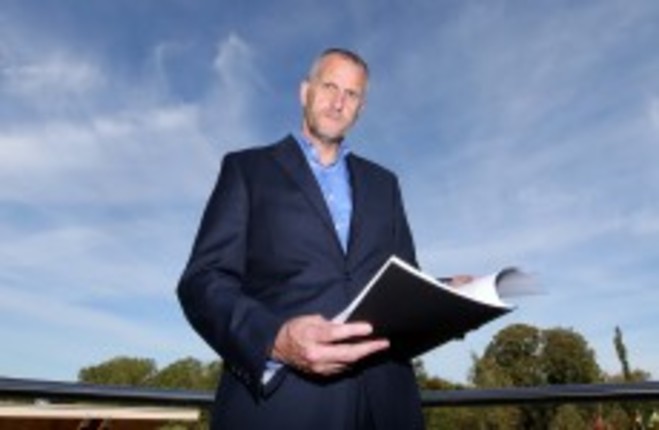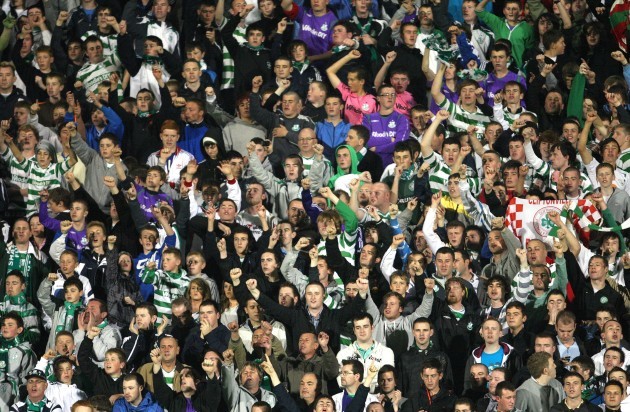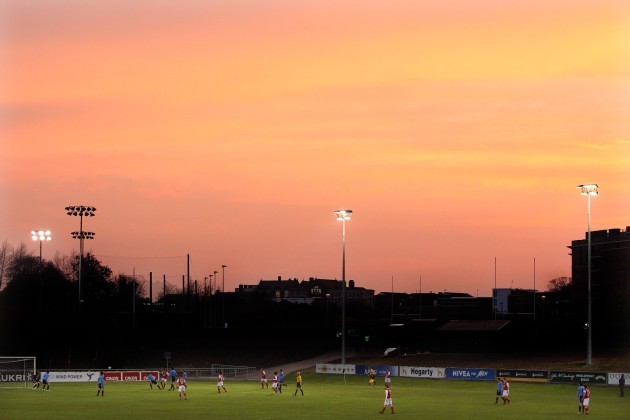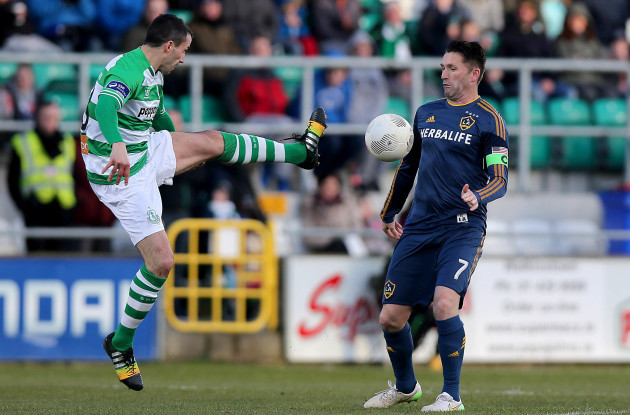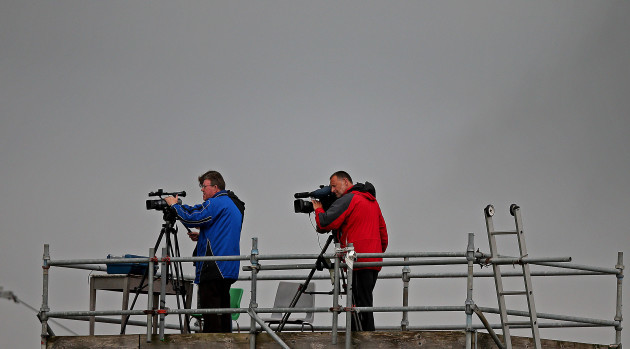THE FAI’S CONSULTATION report was made public last night, and the proposal to reduce the size of the Premier Division has made headlines.
But what else has emerged from this 75-page report? We’ve read it in full and the following is a compilation of some of the most interesring points in the document…
1. There were many contradictory views held by those interviewed
“The Club Licensing system has, in the course of this process, been cited for being too strict and implementing rules and related sanctions or restrictions too literally — to the point of allegedly “driving clubs into financial difficulty”.
“Equally, the FAI is being admonished by many other contributors for not being strict enough in its application of the rules — resulting, in some people’s views, in clubs with lower standards than others being sustained in the game unjustifiably. This type of contradictory view has permeated the consultation process throughout.”
2. Just over one-quarter of the LOI clubs made a profit last year
“In recent years, it has been well documented that the financial issues which affected SSE Airtricity League clubs, most notably debt levels, had improved, principally as a result of the implementation of the merger, the development of the Club Licensing system, the introduction of the salary cost protocol and the work of the clubs in managing their affairs.
“While this is to be welcomed and is a significant improvement on the historical position, many clubs are still struggling to maintain financial equilibrium on an annual basis. In 2014, the combined turnover of the 20 League clubs was approximately €13 million, with six clubs returning profits.”
3. There is less than one full-time administrator per LOI club
“The number of full time, paid administrators within the 20 SSE Airtricity League clubs for the 2015 season will average less than one per club. In an industry that generates this type of cumulative turnover this is far short of what is needed to build sustainable entities with strong revenues, progressive football structures, viable businesses and clubs capable of planning for the future.
“This dearth of full-time staff results in a massive reliance on volunteer administrators at the top level of the club structure running the business. In many cases these volunteers, while incredibly dedicated, are struggling with the time commitment required in managing the club administration and in some cases do not have the professional/business expertise or qualifications to manage a small business such as a SSE Airtricity League club.”
4. The clubs are well behind in terms of marketing etc
“In a large number of cases, while clubs in the SSE Airtricity League are well enough resourced in the sporting area, they fall significantly short in the resourcing of and activities relating to the business, commercial and community relations areas. A key issue with all clubs, as with any business, is the ability to combine Operations (day to day) and Planning (longer term) in order to develop a sustainable business model for the club.
“With the limited number of business-qualified, dedicated resources within the administrations, the absence of any formal planning in off-field activities in the majority of clubs is an understandable but very significant weakness. Encouragingly, there are a small number of clubs currently developing Strategic Plans.”
5. Attendances are increasing overall slowly but surely
“Overall, attendances are moving in a marginally positive manner and while figures are naturally affected by the success of one particular club from time to time, and the effects of seasonal promotion and relegation issues, this has always been the case.”
6. A fairer allocation of league prize money is desired in some quarters
“In the cases of Shamrock Rovers and UCD, success in their initial matches ensured a further €210,000 per club. The combined effect of the two sets of available prize money is seen by some as facilitating “the rich getting richer”.
“There is a strong counter-view that sporting success is and should be rewarded handsomely and the less successful sporting teams should receive significantly less reward. While this is, to some extent, seen as the norm the issue arises in the context of what is best for the League as a whole, including European success, the game of senior football in Ireland and the desire to balance that ambition with the ambitions of any one club. Some inputs into this process suggested a more evenly distributed percentage prize funding approach would benefit more clubs and the League overall.”
7. Clubs are failing to connect with the wider community in many cases
“The ‘community’ should be at the heart of every club’s activities. In reality it struggles to be so for most clubs. While acknowledged to be fundamental to the ongoing success of a club, most SSE Airtricity League clubs’ community activities are not sufficient to make a real and lasting impact on its potential to be more commercially successful and sustainable in the longer term.”
8. More needs to be done to get schoolchildren interested in the League of Ireland
“Every year over 50,000 schoolchildren take part in schools football competitions throughout the country. Again, there is almost no overt link between the SSE Airtricity League clubs and this captive audience of children, their teachers and their parents.
“If even 10% of the children taking part in these competitions became SSE Airtricity League club fans (and persuaded their parents to come along), it would represent a massive boost for clubs in the senior League. The potential for marketing and promotional synergy with the SSE Airtricity League club in the local area with these groups is also very significant and potentially lucrative.”
8. The majority of clubs still favour summer football
“The clubs continue to have differing views on the summer versus winter options for the senior game. One of the reasons for converting to summer football was to enhance the SSE Airtricity League Club’s chances of success in European competition. To some degree this has been a success but the European coefficient in the current season is 41 of the 54 countries.
“While summertime sports such as GAA have been cited as reasons for returning to the winter season, this consultation process has found that even within clubs consensus is not universal on the matter of seasonality. The majority of clubs appear to continue to favour the summer season. The alignment of the U19 and U17 league calendars from 2016 is generally welcomed by clubs.”
9. Fines to clubs are tough but (mostly) fair
“Every fine is completely under the control of the club whether on or off the pitch. While accepting that every fan can’t be searched for banned matters and that the away fans will, on occasion, deliberately attempt to get the home club fined, participation in the SSE Airtricity League, like any other League, requires a level of fines and sanctions to be set.
“I believe the initial level of non-card fines to be appropriate but would recommend consideration of a reduction in the “repeat offence” levels.”
10. The quality of football is viewed relatively positively
“From an on-field perspective, summarising the views expressed, the quality of the football in the Premier Division is relatively well regarded while the difference in levels between Premier and First is felt to be growing.
“The technical skills of the players are generally perceived not to be at the levels of some ten years ago, a fact attributed by some to the younger age profile and an absence of experience and maturity of the players in today’s game. However, the onfield fare on offer is generally considered positive if not spectacular.”
11. Following the MLS structure has been cautiously considered by the League of Ireland clubs
“The MLS model in the USA has been cited as being a successful example to consider. A number of contributors were keen to explore the possibilities of such a franchise operation while recognising that many issues would need to be considered carefully in any such exploration.”
12. Players are not happy with the current situation regarding contracts
“The SSE Airtricity League players believe the current contract model is not working and needs to improve. They cite basic salary levels of an average €4k for First Division and an average of €16k in the Premier Division with only a handful of clubs paying their players from preseason. Over 85% of players are on one-year contracts and this leads to uncertainty and instability for the player and the clubs, in many cases.”
13. The FAI should try to seek tax relief from the Government
“Other significant avenues of exploration with Government include the re-distribution of revenues accruing from betting taxes. The FAI has lobbied government to seek a percentage of the revenues generated by the existing betting tax to be allocated to football with the possible use of any new funds ideally going into infrastructural developments. In a related manner, it has also been suggested that tax relief be sought from Government for infrastructural investments, again, an example of a strategy worth pursuing between the FAI and Government.”
14. The league punches above its weight in terms of media coverage
“The SSE Airtricity League brand is one the most recognised in the country. In research conducted independently in 2014, the League was regarded as providing exceptional media value in sponsorship terms. This is primarily based on the extraordinary levels of coverage devoted to the League in national and local print media, online and via broadcast outlets. The number of mentions, visuals and exposures of all categories is substantial, particularly in the highly committed tabloid media sector and in the context of the volume of match day attendances when compared to other sports.”
15. Clubs may be compensated for televised games
“It is recommended that any future additional TV rights revenues achieved by exploiting new markets outside the limitations of the current/existing TV contracts, be allocated to clubs. In the event that additional general sponsorship revenues are generated and the overall League costs/revenues budget outcome is positive, a specific TV compensation amount should be considered between the FAI and the clubs for future televised games.”
16. League blitzes are a possibility
“Both RTÉ and Setanta Sports are very open to ideas and initiatives to enhance the product and a number of ideas have been mooted through this process including double match broadcasts and the concept of televised weekend League blitzes in the Aviva Stadium. Using the Aviva Stadium to host multiple SSE Airtricity League games (1st week of the season and one other weekend during the season?) is an innovative concept for the League and has potential for significant promotion and PR. From the broadcasters’ point of view their primary goal is to transmit something that is entertaining, to do “something special.”
17. Clubs may need to meet certain madatory standards in “sporting, business, community and administrative areas” by 2020
“Only those clubs who reach the standards in 2020 [will] be eligible for participation in the League.”
You can read the report in full here.
Originally published at 16.03
